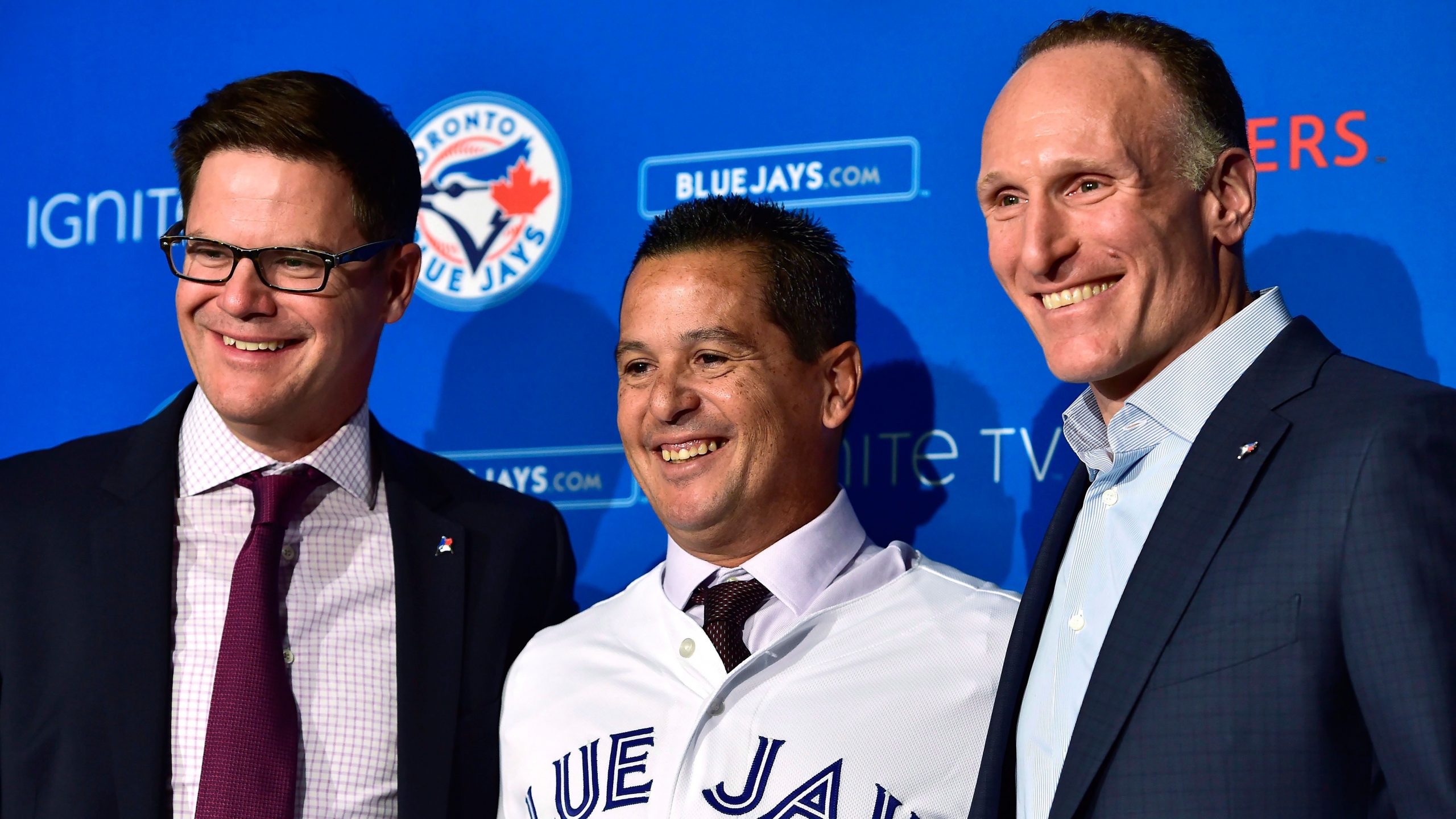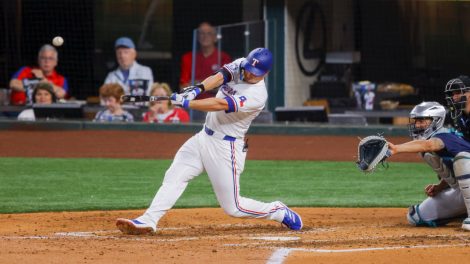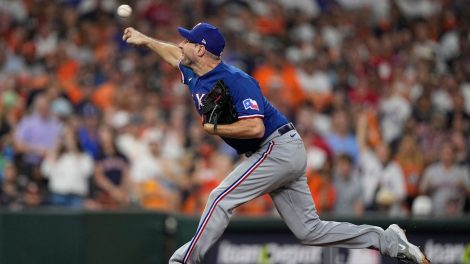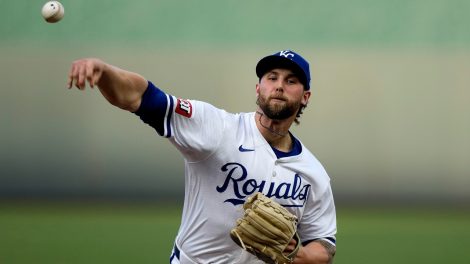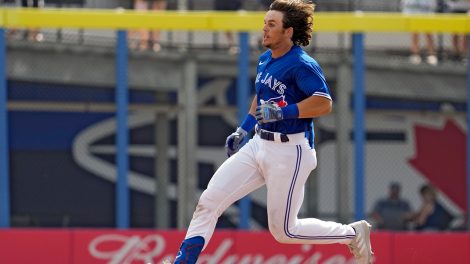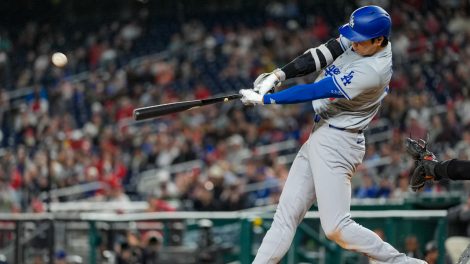TORONTO – In recent weeks “financial flexibility” became the latest entry into the Toronto Blue Jays’ lexicon of loaded terms, joining classics you may remember from off-seasons past such as “parameters,” “boundaries,” and, of course, the timeless, “fit.”
The words are interpreted one way by the front office and mean something entirely differently to the fanbase, and the gulf between the two outlooks is why the current disaffection with the club’s work thus far this winter is so emotionally wrought.
The image in this tweet (props, James) – created after Blue Jays president and CEO Mark Shapiro said the Blue Jays’ flexibility was among the best, if not the best, in the majors – captures the divergent outlooks brilliantly:
Sarcasm aside, it’s worth digging deeper than the usual Twitter cocktail of yelling-loudest hot takes, snark and raw outrage to have a real conversation about what flexibility really means, because used effectively, it’s among the greatest assets in the game.
And the immediate challenge in the current environment for the Blue Jays, aside from finding the right players to use that flexibility on, is that spending money on better players has turned into a crisis of confidence about the club’s intentions.
Typically, that’s when bad buys happen, sort of the way the train-wreck of 2012, topped off by John Farrell’s “trade” to the Boston Red Sox, created the type of pressure that led to the transformative blockbuster with the Miami Marlins that off-season.
Let’s not get hung up debating that one yet again.
Still, whether you were for or against it, along with the subsequent trade it led to for R.A. Dickey, there’s no arguing that to make it ultimately work, home run deals for Josh Donaldson and Marco Estrada, the free-agent signing of Russell Martin and one of the best trade deadline buildups ever were needed. Former GM Alex Anthopoulos wielded some pretty wild magic.
The mortgage for all that wheeling and dealing came due in 2017 and ’18, when big-dollar commitments to Martin and Troy Tulowitzki tied up about a quarter of the club’s payroll with aging, underperforming players, who serve as an easily accessible cautionary tale on flexibility.
Because as much as flexibility is about having few commitments, it’s also about roster efficiency, a decisively unsexy concept that’s integral in the way baseball teams are currently constructed.
Put simply, players who underperform their contract are a restrictively punitive burden, and the only way to overcome the way they tie up payroll dollars is by having a plethora of young players making minimal salaries capable of carrying the load production-wise.
Roster inefficiency is one reason why the Boston Red Sox, beyond avoiding the Competitive Balance Tax, are looking to shed payroll through the likes of David Price, Jackie Bradley Jr., and J.D. Martinez, and have floated the idea of trading pending free-agent Mookie Betts.
Every club, even the Red Sox, New York Yankees and Los Angeles Dodgers, has “parameters” or “boundaries,” to borrow other terms from the Blue Jays lexicon, when it comes to payroll spending. Once money is on the books, it removes a club from options down the road.
So, no biggie if you’re paying Mike Trout or Max Scherzer, but major problem if you’re carrying Robinson Cano or Jason Heyward. The phenomenon is typically exacerbated when a player is toward the back end of his contract, the way Miguel Cabrera or Albert Pujols are, and the production declines while the salary doesn’t.
That’s all part of the deal with free agents, and why the Blue Jays are being justifiably cautious about their flexibility. Right now, even with the four years and $40 million still owed to Randal Grichuk, their roster is nearly at peak efficiency.
Shapiro wasn’t exaggerating last week when he said, “The combination of young talent along with the lack of future commitments, it will never be this again. It’s just for this moment.”
Of course, none of it will matter if that flexibility never gets used, and that’s why the Blue Jays are in this weird place in the public discourse right now.
A desire to protect that flexibility isn’t an excuse for inaction, and not wanting to cut themselves off from some fantasy Gerrit Cole scenario is a bad reason to miss out on Jake Odorizzi, who was theirs for the taking.
As I’ve said ad nauseam, while not perfect, Odorizzi would have offered more upside stability than Tanner Roark or Chase Anderson, and he would have cost less than Hyun-Jin Ryu or perhaps Dallas Keuchel will when all is said and done.
And, importantly, he would have said yes, while the other two may very well not, even if the Blue Jays are right there with the high bid, since recruiting is hard right now for GM Ross Atkins.
Aside from having the money piece, he also needs a player to be convinced that a young core led by Vladimir Guerrero Jr., and Bo Bichette is for real, to want to play for manager Charlie Montoyo, to feel the environment suits his needs, and to trust the overall plan is going to work.
Then, the player must also embrace the challenge of knocking off the Yankees, Red Sox and should-be-good-for-a-while Tampa Bay Rays in the American League East.
All of which puts extra pressure on the flexibility the Blue Jays have now. At a time when they need to add, but aren’t in the best position to do so from a free-agent standpoint, the Blue Jays may want to think twice before relieving someone else’s roster problems via trade.
Landing Ryu will feel good in the moment, but do you really want him at $16-$20 million a season for three or four years, cutting you off from other opportunities down the road, when the team should be better and the options more appealing? What about Price? Or, to a lesser degree, J.A Happ?
Maybe yes, maybe no. Wait, what do the computers say?
Seriously though, this is really where the Blue Jays’ mettle will be tested.
They have many of the necessary ingredients in place to build something special, but the next steps are hard and mistakes incredibly difficult to undo. Flexibility is a tremendous asset, but for the Blue Jays, at least, it’s much easier to get than it is to effectively deploy.
[relatedlinks]

